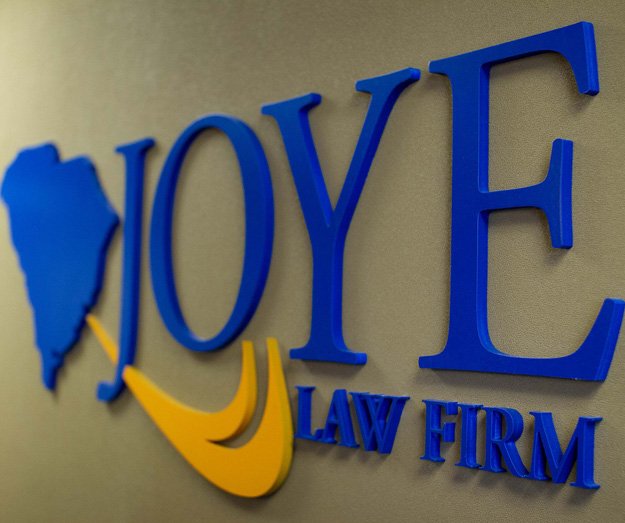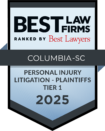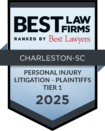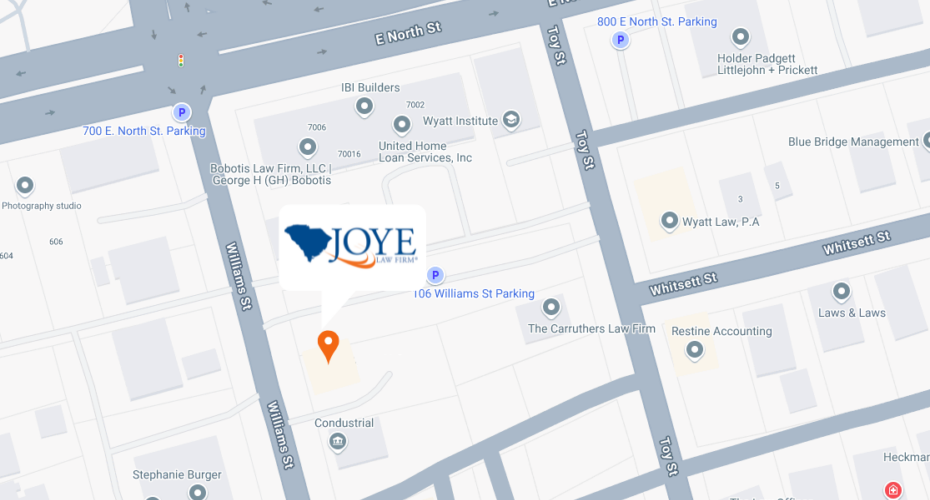
When someone is injured through no fault of their own, they can get compensation in a personal injury lawsuit, and the purpose of that compensation is to get the victim back to how they were before the accident happened, or as close as is possible.
While injuries can heal and a check can pay back all the medical bills and lost income, that’s not enough to fully compensate victims of injuries. The money spent or lost wasn’t the only consequence of the injury; the victims also experienced a great deal of physical pain and emotional distress lasting for weeks, months, or even longer. They deserve to be compensated for that, too.
Although we can’t turn back the clock and stop that pain and suffering from happening, the team at Joye Law Firm works hard to make sure that our clients are compensated for everything their injuries put them through.
Understanding Pain and Suffering in Personal Injury Law
In the realm of personal injury law, “pain and suffering” refers to the physical discomfort and emotional distress that a victim endures as a result of an injury. This concept is key to personal injury claims, as it encompasses damages that do not have a direct financial cost associated with them. Unlike damages that cover tangible losses, such as medical bills and lost wages, pain and suffering damages are subjective and therefore more challenging to quantify.
In a personal injury claim, it’s best to think of pain and suffering in two ways:
- Physical Pain and Suffering: This is the actual physical discomfort experienced by the injury victim. It includes not only the pain and discomfort that the victim has endured up to the point of settlement or judgment, but also the detrimental effects that they are likely to suffer in the future because of the at-fault party’s negligence.
- Emotional and Mental Pain and Suffering: This aspect covers the psychological impact of the injury on the victim’s life. Emotional pain and suffering can manifest as anxiety, depression, loss of enjoyment of life, insomnia, post-traumatic stress disorder (PTSD), and other forms of emotional distress caused by physical injuries or the incident itself. It also includes the future psychological ramifications of the injury.
The legal process of quantifying pain and suffering varies significantly from one case to another, due to its subjective nature. In South Carolina, as in many jurisdictions, there is no exact formula for calculating these damages. Courts often consider several factors, including the severity of the injury, the level of pain, the prognosis for future pain or discomfort, and the extent to which the injury affects the victim’s daily life and activities. The victim’s own testimony, along with medical records and expert testimony, play crucial roles in establishing the extent of pain and suffering.
How to Prove Pain and Suffering
It might seem like pain and suffering would be hard to prove, because no one can feel the pain except the injured person. While proving pain and suffering can be difficult for this reason, it’s not impossible, and your lawyer can look to numerous sources as evidence to prove your pain and suffering.
These may include but are not limited to:
- Testimony from your medical provider(s)
- Testimony from people close to you (friends, family, coworkers)
- Prescriptions that were written for you post-injury
- Journal entries (keeping a daily diary detailing your pain level, mood, and treatment stages after an injury can be useful evidence)
- In some cases, your attorney may also record or ask you to record video footage of how your injuries affect your daily life.
You can improve your chances of effectively demonstrating your pain and suffering by keeping a pain journal. A pain journal serves as a personal record of the pain and suffering you experience daily.
It can include descriptions of the physical pain, its intensity (often rated on a scale from 1 to 10), frequency, and duration. It’s also important to note how this pain affects your daily activities, mood, sleep patterns, and overall quality of life. This diary provides a comprehensive view of your suffering over time, offering tangible evidence of the non-economic damages you’ve experienced.
Beyond physical pain, it’s important to document any feelings of anxiety, depression, loss of enjoyment of life, or other mental health issues stemming from the injury. Entries in your pain diary can be supplemented with records from counseling sessions, psychological evaluations, and any prescribed medications for mental health conditions. This documentation is invaluable in illustrating the depth of your emotional suffering.
How Are Pain and Suffering Damages Calculated in South Carolina?

Pain and suffering damages are also called “non-economic” damages because there’s no easy way to put an exact dollar value on them like you can for “economic” damages like medical expenses and lost wages. Or as the South Carolina Supreme Court puts it, “Pain and suffering have no market price.”
However, the distinction between economic and non-economic damages is mostly legal, as even non-economic damages can have a very real impact on a person’s financial well-being. For example, pain can have tangible medical costs and is associated with fewer annual hours worked, which means pain can also reduce the amount of income earned.
When it comes to obtaining pain and suffering damages in an injury claim, victims and their legal teams work with the at-fault insurance companies to come to an agreement on a monetary amount. If an agreement cannot be reached and the case proceeds to trial,, it will be up to the jury to decide how much is owed for pain and suffering.
There is no simple answer to how much an injury is worth in terms of pain and suffering, because it depends greatly on the individual. For example, while a broken finger may not be a significant injury for many people, it could be devastating for a musician or surgeon.
Aspects that are taken into consideration when calculating pain and suffering damages include:
- The severity of the pain and how long it took the injury to heal
- The general health of the victim before and after the injury
- The age of the victim (especially when considering permanent or disfiguring injuries)
- The limitations the injury posed or poses on the victim’s daily activities
- Whether the injury impacted the victim’s ability to participate in and enjoy their hobbies
- The impact of the injury on the victim’s relationships with friends, family, and coworkers
Our firm looks closely at the ways our clients’ injuries have negatively impacted their lives to help determine a fair amount of compensation for their pain and suffering.
How the Insurance Company Calculates How Much to Offer
While dealing with an injury claim, it’s important to understand how the insurance company will decide how much to offer, which is significantly less personalized.
There are two main methods:
- Multiplier Method: This method simply takes the amount of money owed for your economic damages and multiplies it by a number between 1 and 5. So if you had $10,000 in economic damages, and a multiplier of 3, they would offer $30,000 in pain and suffering damages.
- Per Diem Method: This method determines an amount to provide per day, multiplied by the number of days it takes you to recover from your injury. So, if they decided on $100 per day, and you needed 6 months (180 days) to recover, they would offer $18,000 in pain and suffering damages.
Is There a Cap on Non-Economic Damages in South Carolina?
South Carolina does NOT have a cap on how much an injury victim can receive in damages for their pain and suffering after an injury. The only exception is for medical malpractice claims, which are limited to $564,168 per claimant as of February 04, 2024. In cases involving more than three defendants, the maximum cumulative non-economic damages a injured individual can recover from all medical defendants is capped at $1,637,608.
Pain and Suffering Are a Critical Component of Your Damages
It’s tempting for those who haven’t experienced a serious personal injury to consider pain and suffering as an afterthought in an injury claim. However, pain and suffering represent some of the most devastating consequences of a serious injury. Pain can lead to crippling depression and anxiety. It can stop you from doing everyday things, including those that most enrich your life. Pain can also make it hard to spend time with family, hang out with friends, or go to work or school.
It’s vital for you to work with an attorney who understands the impact of pain and suffering on your life and can articulate that when building your case.
Contact Us for a Free Case Evaluation
Injuries impact accident victims in so many ways that go far beyond the time they spend in the hospital. Our goal is to make sure that injury victims are compensated for all of it. After a car crash or other accident, contact Joye Law Firm to speak to an experienced South Carolina personal injury lawyer about how your injury has affected your life, and what you should demand from the at-fault party. Your initial consultation is always free, with no obligation to hire our firm. If you choose to entrust us with your case, rest assured you will not owe us any unless we win your case, as we take all cases on a contingency fee agreement.
Originally published April 21, 2022. Updated March 14, 2024.


































